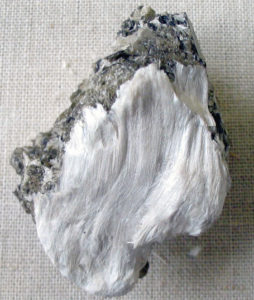Decline in Asbestos Use Yet Veterans and Seafarers Continue to Suffer

Ashley Stafford
Community Outreach Volunteer
www.TreatMesothelioma.org
Before asbestos dangers were discovered, the U.S Navy ships were made using toxic asbestos containing materials. This is one of the major reasons why U.S Navy veterans are at the highest risk of developing asbestos-related cancers like mesothelioma.
The demand for materials with outstanding fire-proofing or insulation properties was higher in the U.S Navy than in any other military branch. That’s why the Navy veterans have been hit the hardest by mesothelioma onslaught due to their asbestos exposure while serving in the Navy.
In fact, there is an indisputable connection between the U.S Navy veterans and present-day mesothelioma as well as other illnesses that are related to asbestos exposure. And, although a Navy Surgeon general produced an annual report, Hazards of Asbestos, in 1939 outlining dangers that veterans where exposed to at the New York Navy Yard, his concerns were ignored by those in command.
Even after evidence emerged showing the long-term health problems that were associated with asbestos exposure, it was not taken seriously due to the need for an effective and affordable way of protecting and insulating submarines and ships.
How Veterans & Seafarers were/are Exposed to Asbestos
Before the U.S Environmental Protection Agency (EPA) started regulating asbestos use, shipbuilders used asbestos containing materials in different applications. For instance, ammunition and weapons storage rooms, boiler rooms and engine rooms had insulation and protection materials made of asbestos. Ideally, this mineral was used in any part of the ship or submarine that required heat resistance. The materials were also used in the sleeping quarters, navigation rooms and mess halls. Asbestos was also used in products like valves, gaskets and cables. Pumps, pipes, motors, compressors and condensers that helped in running the ship were covered with asbestos too. Asbestos was also used on the floors and wall insulation.
The Navy personnel at the base were also exposed to the microscopic fibers of asbestos during the construction, renovation or repair and demolition of naval buildings and ships. As the applications where asbestos was used aged, they became brittle. This made asbestos airborne with any disturbance, more so in close quarters of submarines and ships.
Sailors aboard the warships slept in the bunks below the asbestos-covered pipes. This forced them to shake off dusty material regularly. The same ships were used to transport the Marines exposing them to asbestos too. The below deck workers of the ships had the highest exposure risk because asbestos was mainly used close to the boiler rooms and the engine due to its heat-resistant property.
Effects of Asbestos on all Seafarers
Seafarers who either served in the military or people who used asbestos containing ships were are paying a hefty price today. In the early 70s, the navy and ship makers stopped using asbestos in the production of ships. However, vessels that had already been made with asbestos were used many years after their production was stopped.
Historical analysis, journals from officers and sailors as well as the Navy databases indicate asbestos’ routine presence in shipboard life. Over the last 30 years, scientific studies have cited asbestos exposure dangers especially in the U.S Navy. In fact, many U.S military veterans report respiratory problems that are associated with asbestos exposure. Ideally, veterans who worked as radiomen, infantrymen, pipefitters or mechanics, came into contact with asbestos at some point during their career as servicemen. They worked in aircraft carriers, amphibious ships, auxiliary ships, battle ships, cruisers, destroyers, destroyer escorts, escort carriers, frigates, merchant marine ships, minesweepers and patrol boats among others.
Clearly, although the use of asbestos declined significantly in the 1970s, veterans, seafarers and those who worked in the shipyards continue to suffer from mesothelioma symptoms and the effects of asbestos. And, although the advocates of the public health continue to support a complete ban of the use of asbestos, no legislation for banning asbestos use in the U.S has gone through since the Bruce Vento Ban Asbestos and Prevent Mesothelioma Act of 2008.
Additional information
www.youtube.com/treatmesothelioma/videos
Sources
http://www.motherjones.com/politics/2016/05/the-trump-files-asbestos-mob-conspiracy





I am not entirely sure what your group’s motivation is, but you may want to broaden outside the US military optic, and cover a resurgence in use of asbestos in gasket material being sourced these days. Most people think there is enough of a negative history that no one would use it anymore, but that is not the case. Asbestos can be found on brand new ships.
Hi Martin,
My name is Virgil Anderson. I came across your website and thought you might be interested in my message.
I was recently diagnosed with mesothelioma, which is a cancer caused by exposure to asbestos. From automotive to demolition work, I’ve had many jobs in my life that contributed to my exposure. On some jobs, the air was so thick with debris and asbestos, you could taste it in your mouth.
I’m reaching out to you today because many people are exposed to asbestos when repairing ships. Asbestos was a commonly used material in the building and repair of ships up until the 1970’s because of it’s fire resistant characteristic. Some of the materials that contained asbestos include floor and ceiling tiles, gaskets, firebricks in furnaces, brake lining, boiler cladding, and even doors. Repair materials for ships often contain asbestos too, including glues, sealants, and putties.
When I was diagnosed with mesothelioma I needed immediate medical attention. I found a few websites on the internet that are supposed to help people with my type of cancer but nobody got back to me.
Then I found Mesothelioma.net. Even though I contacted them on a Sunday one of their patient advocates gave me a call back within minutes. They gave me a great deal of helpful information on doctors and resources available to me.
They have recently posted an article about asbestos exposure from ship repair here: https://mesothelioma.net/asbestos-exposure-ship-repair/.
Perhaps some of your website visitors could use the help of Mesothelioma.net. The website is filled with information on mesothelioma treatments and doctors, asbestos trust funds for victims, and a lot more. They also sponsor The American Cancer Society, the MD Cancer Center, and the Make a Wish Foundation. If it’s not too much trouble, would you be so kind as to share a link to that article on your website?
Please let me know what you think when you get a chance. Thanks very much for your time.
Virgil Anderson